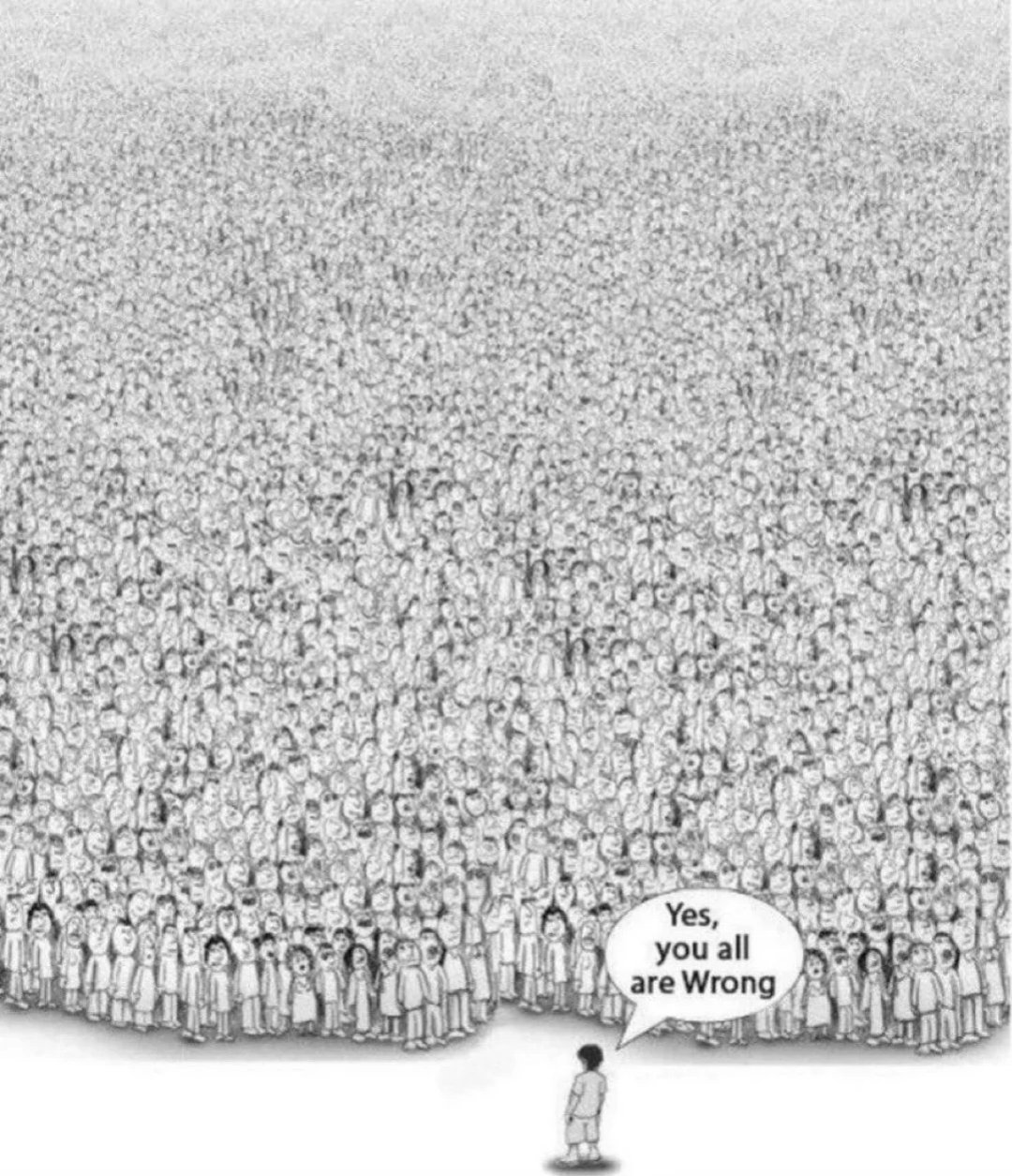this post was submitted on 07 Dec 2023
529 points (87.6% liked)
Asklemmy
43908 readers
1311 users here now
A loosely moderated place to ask open-ended questions
If your post meets the following criteria, it's welcome here!
- Open-ended question
- Not offensive: at this point, we do not have the bandwidth to moderate overtly political discussions. Assume best intent and be excellent to each other.
- Not regarding using or support for Lemmy: context, see the list of support communities and tools for finding communities below
- Not ad nauseam inducing: please make sure it is a question that would be new to most members
- An actual topic of discussion
Looking for support?
Looking for a community?
- Lemmyverse: community search
- sub.rehab: maps old subreddits to fediverse options, marks official as such
- [email protected]: a community for finding communities
~Icon~ ~by~ ~@Double_[email protected]~
founded 5 years ago
MODERATORS
you are viewing a single comment's thread
view the rest of the comments
view the rest of the comments

...which isn't a Maths textbook!
Except what it states is the Distributive property, not The Distributive Law. If I call a Koala a Koala Bear, that doesn't mean it's a bear - it just means I used the wrong name. And again, not a Maths textbook - whoever wrote that demonstrably doesn't know the difference between the property and the law.
No it isn't. This is a year 7 topic. In Primary School they are only given bracketed terms without a coefficient (thus don't need to know The Distributive Law).
No, I'm not assured of that when you're quoting wikipedia instead of Maths textbooks, and don't know the difference between The Distributive Property and The Distributive Law, nor know which grade this is taught to.
BWAHAHAHAHA! You know how many wrong things I've seen in there? And I'm not even talking about Maths! Ever heard of edit wars? Whatever ends up on the page is whatever the admin believes. Wikipedia is "like an encyclopedia" in the same way that Madonna is like a virgin.
And yet you have failed to point out how/why/where. In all of your comments here, you haven't even addressed The Distributive Law at all.
And neither of those examples is about The Distributive Law - they are both to do with The Distributive Property (and you wrote the first one wrong anyway - it's a(b+c)=(ab+ac). Premature removal of brackets is how many people end up with the wrong answer).
Let me quote from the article:
"In mathematics, the distributive property of binary operations is a generalization of the distributive law, which asserts that the equality
x*(y+z) = x*y + x*zis always true in elementary algebra."This is the first sentence of the article, which clearly states that the distributive property is a generalization of the distributive law, which is then stated.
Make sure you can comprehend that before reading on.
To make your misunderstanding clear: You seem to be under the impression that the distributive law and distributive property are completely different statements, where the only difference in reality is that the distributive property is a property that some fields (or other structures with a pair of operations) may have, and the distributive law is the statement that common algebraic structures like the integers and the reals adhere to the distributive property.
I don't know which school you went to or teach at, but this certainly is not 7th year material.
Let me say again, people calling a Koala a Koala bear doesn't mean it actually is a bear. Stop reading wikipedia and pick up a Maths textbook.
It's not an impression, it's in Year 7 Maths textbooks.
And yet it appears in every Year 7 textbook I've ever seen.
Looks like we're done here.
If you don't want to see why you're wrong that's your thing, but I tried. I can just say, try to re-read the math textbook you took pictures of, and try to understand it.